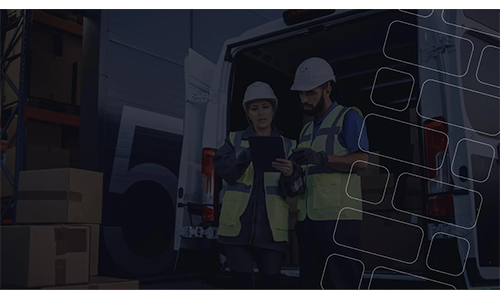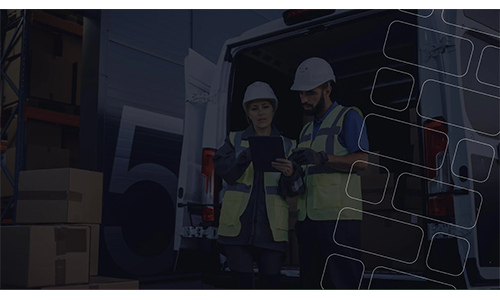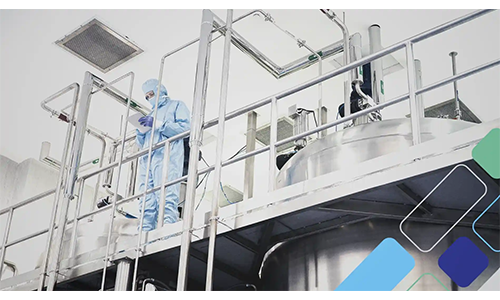Price provides a variety of services, including electrical construction and remodeling, utility installation, directional boring, machine installation and modification and fire-alarm installation. The company factors safety into every job bid.
Before each new project, Weekly and the foremen analyze the blueprints and discuss the potential safety hazards and mitigation strategies. Once a project is in progress, Weekly will walk the job site with the foremen and site employees in an effort to create a safer working environment for Price employees and contractors.
Price Industrial Electric Inc. —
Hiawatha, IA
102 employees/50 active sites/
1 EHS professional
All Price employees complete a 10-hour OSHA class and receive lockout/tagout training, and the company encourages them to participate in the safety committee, which meets several times per quarter. Weekly also seeks employee input for PPE selections.
"It's one of the safety officer's top priorities to purchase quality products that people will want to wear, and not distribute the cheapest equipment I can find and expect it to work for everyone," Weekly says.
Price emphasizes employee health as the foundation of a safe and successful business. The company provides an employee assistance program for workers struggling with substance-abuse issues, and offers free annual health screenings to employees and their spouses. Price also offers free gym memberships to employees, and subsidized gym memberships to employees' families.
Rockwell Automation
People, compliance, continuous improvement and leadership are the key elements of Rockwell Automation's EHS success. But as is the case with any top-performing organization, senior leadership's support of safety is the foundational element.
Rockwell, which makes control systems, information software, sensing devices and other automation technologies, has implemented a number of strategies to keep its people engaged in safety. For example, as part of the FOCUS (Focused Observations Can Uncomplicate Safety) program, plant-level employees conduct behavior-based observations and analyze those behaviors as leading indicators of accidents. The employees serve on the steering teams that oversee and manage the process, and are rewarded for their participation.
In 2008 and 2010, the National Safety Council administered its Safety Barometer Survey to 2,000 Rockwell business employees around the world. Rockwell expanded the survey to manufacturing employees at 17 global operations, and is conducting the survey every three years at these sites.
"These results are reviewed by location management, and action plans are developed to address perceptions and gaps found during the surveys," Thurman says. "Results and improvement actions are broadly communicated to the employees."
Rockwell Automation —
Milwaukee, WI
22,000 employees/57 sites/
80 EHS personnel (FTE)
Rockwell uses a risk-based approach to manage hazards and potential exposures, and the company has developed a process called Significant Risk Assessment, or SRA, to annually identify, assess and prioritize health and safety risks. The SRA method defines and measures hazards in various categories, including physical, chemical, health and ergonomic. The assessor scores the potential severity and likelihood of injuries and illnesses and the efficacy of controls in place. The result is a quantified list of significant risks, which is used to develop goals and prioritize EHS activities for the site being measured.
SBM Management LP
At SBM Management, a McClellan, Calif.-based provider of janitorial, housekeeping and maintenance services, safety is considered a business process that's integral to the company's success. Case in point: If you're a potential customer exploring the company's website, you'll find safety listed as the first "key advantage" to doing business with SBM.
SBM's true north is a "zero-harm" work environment – which means that no job will be performed if it can't be performed safely.
"The safety of our employees will not be compromised for any reason," Stauffer says. "This mindset ensures that we go above and beyond OSHA compliance."
Elements of SBM's safety efforts include:
- Local and customer EHS requirements.
- Daily tracking, validation and communication of leading and lagging EHS metrics.
- A comprehensive training program that includes weekly site "safety chats" covering more than 100 topics.
- Proving all operating sites with a "safety playbook" that includes detailed safety tools, programs, procedures and training materials.
- Documented inspections of tools and equipment.
- Safety incentive and recognition programs.
- 24/7 on-call access to EHS personnel when incidents occur.
SBM Management LP —
McClellan, Calif.
6,000 employees/400 sites/ 10 EHS professionals
SBM has developed a process – the Safety Assessment Operation Review, or SOAR – to evaluate safety practices at high-risk work sites. The four-step process helps identify deficiencies in safety, training, management engagement and communication at a particular site.
The company's collective efforts have produced dramatic results. Over the past five years, SBM has reduced its total recordable incidents by 65 percent and its lost-workday incidents by 75 percent, and the company boasts that 85 percent of its client sites have gone 12 months without a recordable incident.
Scot Forge Company
Scot Forge Co. is employee-owned, and the highlight of the safety program at the open die and rolled ring metal forging company is that the culture asks each employee to think and act like an owner.
He adds that "family and safety go hand in hand" at Scot Forge. There are numerous family members who work together at the company, "so if someone does get hurt, there likely is a family member within the company who also [directly] is impacted by the incident."
Company management tells the new-hire trainers to instruct new employees as if it were their own son or daughter receiving the training. New-employee skill blocks have been created by department teams. Over 35 skill blocks – designed to teach core techniques such as safe grinding, banding of parts, chain and rigging, etc. – have been developed and are the foundation of the company's new-employee training process. The blocks are divided up into 30-day, 60-day, 90-day and 120-day skill sets that one trainer teaches and another trainer verifies through competency testing. A supervisor gives the final exam, which consists of both a written and practical/demonstration exam of all the department's skill blocks. Before being released from the probationary period, new employees must master all of the skill blocks for their department.
Scot Forge Company —
3 sites (Spring Grove, Ill.; Franklin Park, Ill.; Clinton, Wis.)
630 employees/2 EHS professionals
The company believes not only in teaching safety awareness to employees, but also to their family members as well, reinforcing the safety message at events like the company picnic.
"Last year, our company picnic had a western theme," says McGillivray. "We created safety ‘wanted' posters for the kids to color that included [a photo of] their parent and [reminders] why safety matters. These posters were displayed all over the plants."
TP Mechanical
Safety starts at the top from Day 1 for TP Mechanical's 500 employees.
Every time employees – new or long-time – start their first day on a new project, they receive an on-site safety orientation covering topics such as owner safety requirements, site-specific safety hazards, site-specific safety requirements, emergency action plan, key facility locations and more. The employee then is paired with a current on-site worker who has demonstrated the required knowledge to perform his or her tasks in a safe manner.
TP Mechanical _
Cincinnati, Ohio
500 employees/5 EHS professionals
Sub-contractors also must attend site-specific safety orientations prior to any on-site work. The company also has implemented a new subcontractor pre-qualification process. It requires that any company seeking placement on TP Mechanical's pre-approved list must submit three years of safety data. The documents must be signed by a corporate officer and the sub-contractor's current EMR must be below 1.00 and their reported OSHA injury and illness rates must be below their industry's average.
"Our company's safety philosophy is this: If management does not plan to prevent accidents, then they are planning to have them," says Richard Absher, corporate safety director. "TP Mechanical does not believe in the word ‘accident,' because ‘accident' implies that it happened by mistake. We use the word ‘incident' because there is always a reason or a cause for the occurrence."
Watermark
Since the company's inception in 2001, Watermark has maintained a DART rate of zero. Dive into the company's EHS philosophy, policies and practices, and it's easy to see why Watermark has been successful at protecting its workers and the environment.
The fundamental elements of Watermark's EHS efforts are management commitment and employee involvement; worksite analysis; hazard prevention, control and compliance; and health and safety training. Health and Safety Program Director Peter Vernon, who reports directly to Watermark's CEO, emphasizes that employee involvement is a cornerstone of the company's EHS success.
"Watermark's program is directed and implemented by the employees, not just corporate managers," Vernon says. "Our employees possess ‘automatic thinking' when it comes to safety and the well-being of others. This thinking is something that doesn't come quickly or easily. It's developed over time through great effort, training, awareness, no compromising and, most importantly, through genuine caring."
Watermark —
Lowell, Mass.
80 employees/1 EHS professional
Employees from all levels of the company volunteer to participate in the Environmental, Safety and Quality Committee, which promotes awareness of EHS and quality issues and develops initiatives to improve the health, safety and wellness of Watermark employees and their families. Pocket-size "tip slips" enable employees to anonymously submit EHS ideas and concerns; managers are required to provide feedback on all tip-slip suggestions.
Watermark often works on projects in which client specifications call for at least two people on site to be trained in CPR and first aid. Watermark takes it a step further by requiring all of its employees to be trained in CPR and first aid and in the use of automated external defibrillators and bloodborne pathogens. Trainees include everyone from laborers and superintendents to company officers and project managers.
Westar Energy Inc.
Every day, nearly 700,000 residential, commercial and industrial customers in Kansas depend on Westar Energy for electricity, and the utility prides itself on being so reliable that customers "take us for granted." But Westar's reliable energy doesn't come at the expense of worker safety.
The numbers reflect Westar's commitment to safety: The company's total case incident rate has declined steadily over the years, to a record-low 0.58 in 2013 (well-below the industry average). Employee engagement is high, thanks to growing participation in safety meetings, safety committees and peer-to-peer safety observations. And each year, Westar brings company executives and nationally known speakers to 12 Westar facilities across the state as part of safety-focused kick-off and mid-year tours, and holds safety rallies in the second and fourth quarters at 32 worksites across the state, involving 2,000 of Westar's approximately 2,400 employees.
Westar Energy Inc. —
Topeka, Kan.
2,340 employees/30 EHS professionals
Still, Westar, which is the largest electric utility in Kansas, isn't content to rest on its laurels. When the company's behavior-based observation process became "stagnant," Westar developed separate processes for supervisors and craft employees, and eventually created custom forms for field and customer-care personnel, explains Ben Scriven, manager of plant safety. Westar's behavior-based process is based on the concept of "no name, no blame" and emphasizes communication and positive reinforcement during the observations.
"What makes Westar different is the recognition that we're never as good in reality as we think we are," Scriven says. "We're not satisfied with where we are. We understand that we will fail if we stop improving. And failing our employees is not an option."













































































































